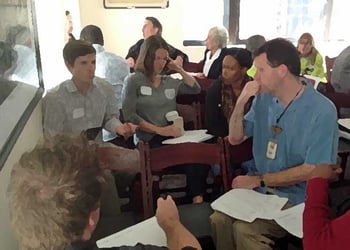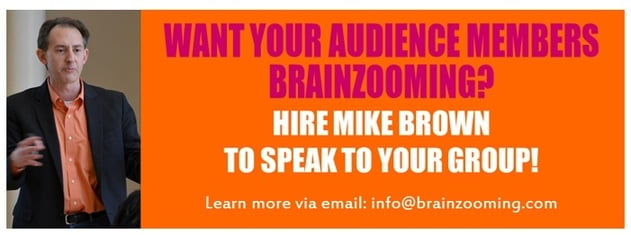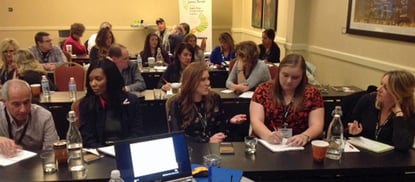We published an article on how to engage a team in strategic thinking and creative thinking exercises without having an offsite meeting.
It prompted a question from our buddy, "Jim in Massachusetts." Jim asked about handling people not interested in participating. Specifically, Jim asked, "What do you do about the ‘overly serious’ people who don’t get the exercises, never read, ‘Whack on the Side of the Head’ or its sister book, and try to turn these meetings into useless frustration exercises by bitching about the work they are not getting done??"
I address this question all the time in creating strategic impact workshops, but was surprised nothing on Brainzooming covered this.
The point of the "strategic thinking without having an offsite meeting" list was you can engage a team in creative thinking exercises without telegraphing what they are doing.
When Multiple People Aren't into Creative Thinking Exercises
Suppose multiple people on a team don't want to engage in creative thinking exercises or anything resembling creative thinking.
- Typically we try to head this off before things begin by working with the client to plan who will be participating.
- If several people MUST be there who are reluctant but not obnoxious about not wanting to participate, we spread them out with people who are engaged. We then see if we can win them over to participating.
- If a few people are ruining things for others and for what we're trying to accomplish, we might put them all together in a group and let them beat up on one another for the rest of the time. While other participants get to switch groups, they'll all stay together. If ANYTHING productive comes from them, it's a pleasant surprise.
When One Person Isn't into Creative Thinking Exercises
With just one person in a group not into creative thinking, our approach is different.
- If a boss or authority figure is taking energy from creative thinking activities, we pair them with someone that can over-enthuse the group to offset the authority figure. They generally stay together and won't move to other groups. This minimizes the damage the authority figure might inflict on the group.
- If we have a good relationship with the authority figure, we might ask them to step aside and only observe. In one case, given a team's concerns (even through their boss was NOT dampening anything), the client left the room so the team could work on people issues inside the organization unencumbered.
- If someone other than the boss is overtly antagonistic to strategic thinking exercises and activities, we simply suggest they use the remaining time on their own. This first happened when a curmudgeony director at our company walked in late to a strategy planning activity. He took one look at the toys and noisy people having fun working on new ideas, and told me, "I have real work to do." I told him we'd all be better off if he concentrated on his real work. That was the end of that.
That’s Our Experience
Again, the best way to deal with these situations is heading them off before the group convenes. If not, you may have to improvise. If this situation happens in the future, however, who knows what other solutions the specific setting may inspire! – Mike Brown





